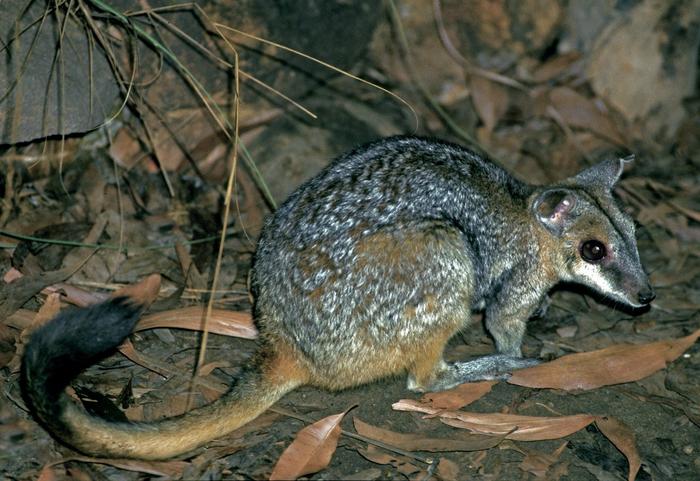Australian researchers have discovered that little rock-wallabies more than make up for their small size when it comes to biting power. The dwarf marsupials can bite with much greater force than their larger cousins, allowing them to feast on the same tough vegetation.
The findings, to be presented at the European Congress on Obesity, show that two miniature rock-wallaby species have evolved skull adaptations that give their bites a huge punch relative to their body size. The surprising super-strength has earned them the nickname “Little Wallaby Syndrome” from the Flinders University research team.
“If I were a vegetable, I would not mess with a pygmy rock-wallaby. They totally have ‘Little Wallaby Syndrome’,” said study leader Dr. Rex Mitchell. “We already knew that smaller animals have a harder time eating the same foods as larger ones, simply because their jaws are smaller. For example, a chihuahua wouldn’t be able to chew on a big bone as easily as a German Shepherd.”
To investigate how the tiny nabarlek and black-flanked rock-wallabies can consume similarly tough foliage as wallaby species up to eight times larger, the researchers used CT scanning to analyze nearly 400 rock-wallaby skulls across all 17 species. Clear differences emerged between the largest and most petite varieties.
“We found clear indicators that both dwarf rock-wallabies have adaptations to harder biting: they had shorter, rounder snouts and teeth positioned at the back of the jaw where they are more effective at harder bites,” explained Dr. Mark Eldridge from the Australian Museum.
But the biggest surprise came from the wallabies’ teeth themselves. The researchers discovered that some teeth on the dwarfs were massively larger compared to their bigger cousins’ chompers.
“This makes sense, because many animals that need to bite harder into their foods tend to have bigger teeth for their size,” Dr. Mitchell said. However, the two miniature species had distinctly different supersized teeth.
The nabarlek, the world’s smallest rock-wallaby at just over 1 pound, boasted exceptionally large molars for grinding up grasses, herbs, and other low-growing vegetation. Meanwhile, the black-flanked rock-wallaby’s enlarged premolars are better suited for slicing through shrub branches and leaves.
“These potentially indicate different adaptations to vegetation types. Larger premolars are better at slicing through leaves and twigs of shrubs, while larger molars are better for grinding up grass and other plants that are closer to the ground,” said Mitchell.
Aside from revealing the evolutionary tricks used by tiny herbivores to maintain their menu options, the skull study provides broader insights into the relationship between size and bite force across species. Co-author Associate Professor Vera Weisbecker explained:
“We therefore suspected that something happened in the evolution of their jaws to allow them to stick to these diets. The findings show that dwarf species of rock-wallabies have skulls that are better at biting than larger species.”
Dr. Mitchell added that the functional effects of skull size on bite power are often overlooked because differences in size are not generally considered relevant to feeding adaptations. However, the wallaby research demonstrates that smaller animals require more capable biting skulls to consume the same foods as larger counterparts.
“The research team has shown that some differences in the skulls are related to how hard a skull can bite, and that smaller animals need to have harder-biting skulls than larger animals if they want to eat the same kinds of foods,” Mitchell summarized.
While humans may chuckle at the “little Napoleon” stature of the stout rock-wallabies, the newly discovered bite force could make these pint-sized powerhouses the last laugh of the Australian bush.
The article, Functionally mediated cranial allometry evidenced in a genus of rock-wallabies (2024), by D. Rex Mitchell, Sally Potter, Mark DB Eldridge, Meg Martin and Vera Weisbecker has been published in Biology Letters. DOI: 10.1098/rsbl.2024.0045. https://doi.org/10.1098/rsbl.2024.0045 (paper will be online by 11.30am GMT)
If our reporting has informed or inspired you, please consider making a donation. Every contribution, no matter the size, empowers us to continue delivering accurate, engaging, and trustworthy science and medical news. Independent journalism requires time, effort, and resources—your support ensures we can keep uncovering the stories that matter most to you.
Join us in making knowledge accessible and impactful. Thank you for standing with us!

